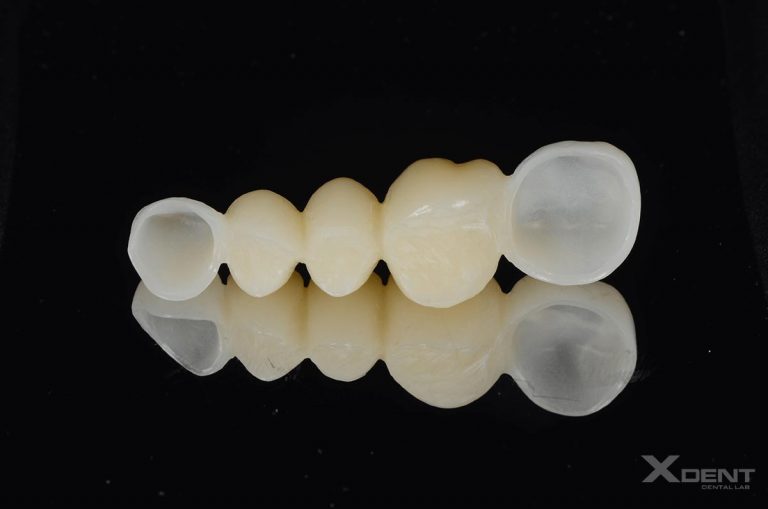If you’ve ever been to the dentist for dental treatment, you’ve probably heard of Temporary crowns or provisional crowns, but have you ever wondered why in some cases dentists often recommend temporary crowns? What is the relationship of provisional crowns to aesthetics? You will be surprised to know that using a temporary crown can save you more money later.

1. The role of Temporary Crowns?
Temporary crowns are often recommended by dentists in the following cases:
- When the patient loses a large incisor area while waiting for the permanent tooth to be processed, wearing a temporary crown helps to cover the missing tooth space, thereby helping the patient confidently communicate.
- Temporarily restore the patient’s chewing and grinding function
- When the patient suffers an implant procedure: wear temporary crowns to help protect the damaged gums and the implant abutments, waiting for the gum restoration process for the next step. In addition, it helps to reduce sensitivity and sensitivity in the implant area
- Maintain proper spacing between teeth
- Assist the dentist in assessing the suitability of the crown for the user, thereby completing the permanent crown
2. How long do you wear temporary crowns?
Usually, you need to wear a temporary crown within two weeks to several months. However, in some special cases, you may have to wear it longer. For example, the healing and bone integration phase of an implant in some people can last from weeks to months before the implant is restored with a permanent crown.
3. Difference between temporary teeth and permanent teeth
Most temporary teeth have the same shape and color as the patient’s real teeth. However, because temporary crowns are only needed for a short time, they are not as durable or aesthetic as permanent crowns.
In addition, in some cases, the temporary tooth material will also contribute to the color of the crown that is not like the remaining real teeth in the jaw.
4. How to take care of temporary teeth
Oral care is always essential in all cases. In particular, when you are wearing temporary teeth, you will need to be more careful in this regard so as not to break the crown.
Dentists recommend that people with temporary teeth:
- Continue to maintain your usual oral hygiene routine to ensure that the surrounding temporary crown is clean
- Gently floss to remove food particles stuck between teeth
- When brushing your teeth, brush your teeth in the area where the crown is attached slowly and gently
5. Note on eating and drinking when wearing temporary teeth
In addition to some notes in the process of oral hygiene, people who are wearing temporary teeth also need to be careful in eating.
Although the chewing function of the tooth can return to normal at this time, it should be noted that the special cement used to attach the temporary crown is not effective in keeping the crown in place for a long time. Therefore, temporary teeth are completely capable of falling out when subjected to too much impact from chewing hard, chewy or sticky foods.
In addition, eating sweet, high-sugar foods during this stage is also not a good idea. This is because there may be a small gap between the temporary crown and the gum line. Food particles can get stuck here and create conditions for the development of tooth decay.
Therefore, according to many dentists, people who are wearing temporary teeth should try to limit the use of the following foods and dishes during this time:
- Steaks and tough meat dishes, crispy bread, crunchy vegetables, crunchy and hard fruits
- Corn (corn) and popcorn, chewing gum, hard candy
- Nuts, caramel, ice, and items that are too hot or too cold can affect the function of the special cement to hold the temporary crown in place.
In general, temporary teeth are responsible for temporarily restoring the chewing function of the teeth, and at the same time improving the aesthetics while waiting for the completion of the implant. Proper care of temporary teeth can contribute to ensuring the effectiveness of the implant as expected.
6. PMMA temporary crowns
Thanks to advancements in dentistry, the demand regarding temporary dental restorations has increased significantly. PMMA (Polymethyl methacrylate) is one of the advanced dental materials used broadly for temporary dental restorations. Because of its polymer, PMMA has high resilience, which increases the lifespan compared to other temporary teeth materials.
Combined with Cad/Cam technology, the temporary dental restorations from PMMA increasingly meet aesthetic requirements, are convenient and easy to use.
PMMA temporary crowns are processed by Cad/Cam technology will bring the advantages such as extreme accuracy and high aesthetic (smooth and life-like appearance). Besides, they do not change color, are less susceptible to abrasion, and are difficult to break if well-maintained.
For the anterior area, PMMA is one of the best options as it satisfies the requirement of long-life provisional restorations with an impeccable aesthetic. Finally, a great benefit of PMMA crowns is that the crown can easily be removed without any risk of breaking the tooth stump at intermediate treatments.
At Premier Lab Dental, we use PMMA block from the Yamahachi brand combining advanced Cad/Cam technology to help to create quality and aesthetic PMMA products that meet export requirements. If you are looking for PMMA products, contact us.
Our Service
- Zirconia Crown and Bridge
- Full Arch Restoration